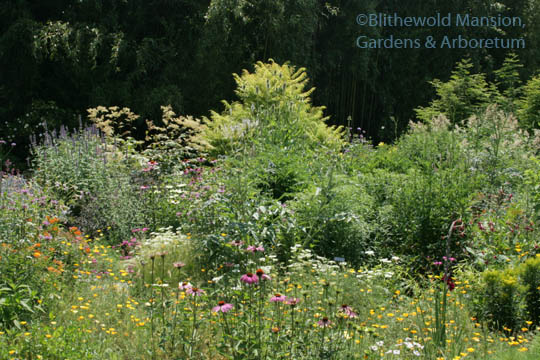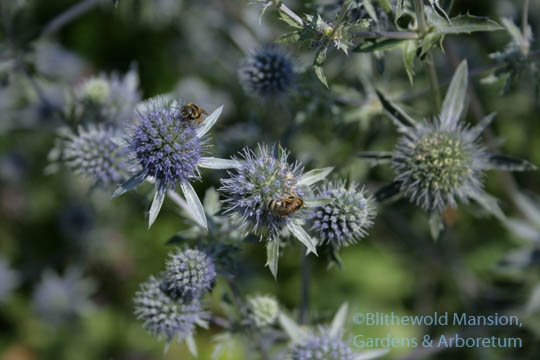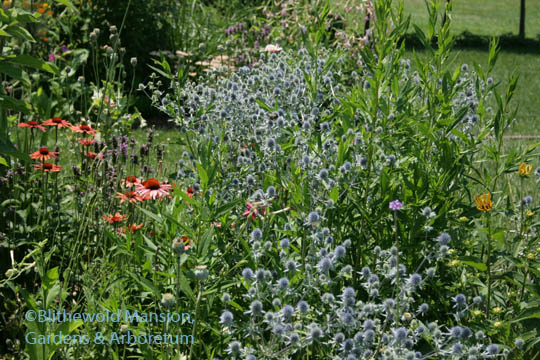The most attractive plants
I’d say it’s easy to plant a garden full of attractive plants except that it isn’t so easy. There’s way too much to choose from and what qualifies as attractive changes, for me at least, by the day. Some days it’s green flowers; other minutes it’s spectacularly enormous leaves; sometimes it’s blue foliage or anything orange. But it’s very easy to find plants that are attractive… in other ways … to other garden visitors, such as insects and birds, bees, wasps and butterflies. And planting those plants turns the garden from a pretty picture into an experience.
Every year we change the Display Garden around a bit. Some years we focus on flower colors (green, blue, anything that amazing apricot shot through with magenta…), sometimes we play more with texture (giant leaves… you catch my drift) and I have never known these gardens to not hum – audibly and visually – with activity. The gardens look alive because we plant such a variety that there are always plenty of plants for the insects and birds. But this year we tried to plant, in the big display garden bed in particular, ONLY what would be attractive to pollinators.The garden is buzzing! And lucky for us and for all the garden’s human visitors, we didn’t have to leave aesthetics out of the design equation.
The hands-down busiest (and hands-off busiest if you have any healthy respect for bees and wasps on a mission) is the sea holly (Eryngium planum). There must be an easy dozen different species on it at any given mid-day moment. And it’s highly attractive to me too, fulfilling the blue foliage (and flower) category so handsomely along with having an excellent architectural prickliness. When the sea holly goes by, the more subtly lovely (green) flowers on the mountain mint (Pycnanathemum muticum) will likely draw the most visitors.
But the butterfly weed (Asclepias tuberosa), which is a stunning shade of brilliant orange that incidentally looks amazing with sea holly, not only attracts all sorts of bees, wasps and butterflies to its flowers, the plant itself is the only larval food source (along with every other member of the Asclepias/milkweed family) for the beloved Monarch butterfly. It’s always great fun to attract butterflies to the garden, and it’s even better to give them a reason to stay. At least 4 generations will go from egg to caterpillar to chrysalis to butterfly over the course of the summer in a garden with an Asclepias restaurant. When Gail and I started researching plants for this garden we were thrilled to note that a lot of the best nectar sources are also popular host plants for all sorts of butterfly and moth caterpillars – like goldenrod (Solidago), Aster, false indigo (Baptisia), Joe Pye weed (Eupatorium) and even Zinnia.
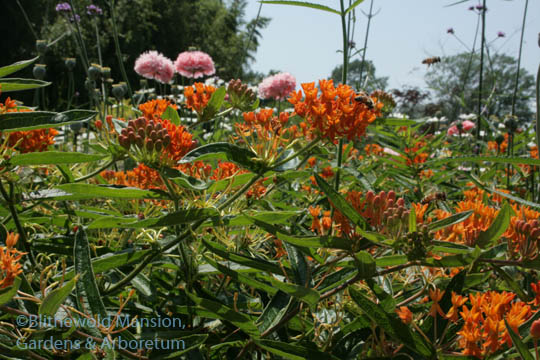
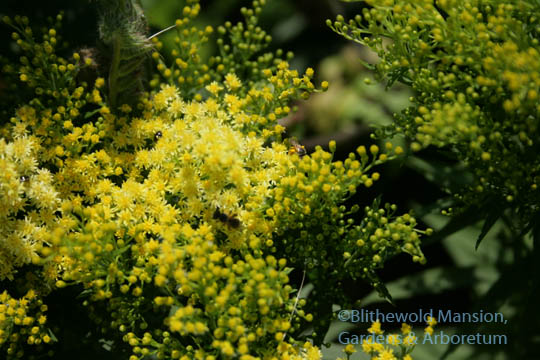
Do you plant anything specifically for bees and butterflies? What are the most attractive plants in your garden?

